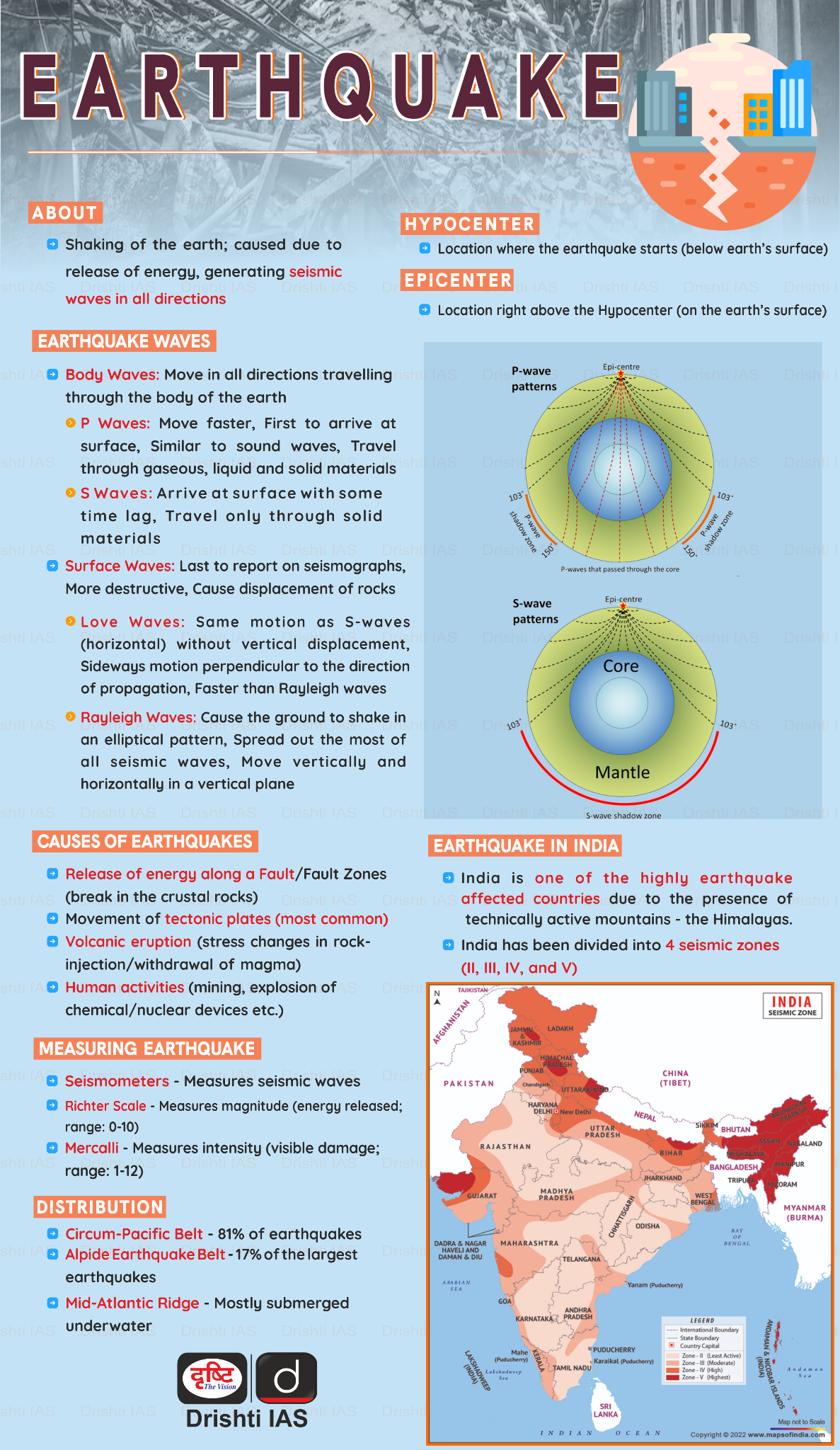Delhi Earthquake 2025 | 18 Feb 2025
Why in News?
An earthquake of 4.0 magnitude struck Delhi in February, 2025 that was caused due to hydro fracturing beneath the Aravalli-Delhi Fold Belt.
What are the Key Facts Regarding Delhi Earthquake 2025?
- Seismic Origin in Delhi: It had an epicenter within the city (not in Himalayas) at a shallow depth of 5 km resulting in shallow earthquake, sending more seismic waves to the surface and creating more tremor at the surface.
- Epicenter is the point on the Earth's surface that is directly above the focus or hypocenter (where the earthquake originates within the Earth's crust).
- Shallow earthquakes are between 0 and 70 km deep, intermediate earthquakes, 70 - 300 km deep, and deep earthquakes, 300 - 700 km deep.
- Seismic Zone Classification: Delhi lies in Zone 4 of India’s earthquake hazard map, indicating high seismic risk with MSK-8 intensity (Zone 5, most vulnerable, corresponds to MSK-9 intensity).
- The MSK (Medvedev-Sponheuer-Karnik) scale is a measure of intensity, rather than strength (energy released) that is described by magnitude.
- Hydro Fracturing: The earthquake was caused by normal faulting (with vertical rock movement) and hydro fracturing was identified as a key trigger of this earthquake.
- Beneath Delhi, aquifers and underground water channels erode rock formations, causing fractures that occasionally release stress as seismic waves.
- Aravalli-Delhi Fold Belt: Delhi lies in the Aravalli-Delhi Fold Belt, with deformed rock layers folded millions of years ago.
- While tectonic activity has reduced, some active faults still cause occasional mild earthquakes.
- Difference from Himalayan Earthquakes: Himalayan earthquakes result from tectonic plate movement i.e., subduction of the Indian plate under the Eurasian plate, causing intense stress and large quakes.
- The Delhi earthquake was caused by localized geological stress rather than tectonic plate movement.
- Role of Local Faults: Several local faults, such as the Mahendranagar Fault and Sohana Fault, exist in the Delhi region that can create earthquakes upto 6 magnitude.
- Sounds During Earthquake: Earthquakes do generate low-frequency sound waves, but these are usually not heard.
- The sounds reported during the quake may have been caused by vibrations in buildings and structures, not the quake itself.
- Large Earthquake in Delhi: A magnitude 8 earthquake along the Main Central Fault (MCF) in the Himalayas could trigger large quakes in Delhi, as the Yamuna's alluvial plains are less able to absorb the energy than harder rocks.
- MCF lies between the Greater Himalayas in the north from lesser Himalayas in the south.
|
Drishti Mains Question: Analyze the role of hydro fracturing in the occurrence of earthquakes. How do these differ from the causes of earthquakes in the Himalayan region? |
UPSC Civil Services Examination Previous Year Question (PYQ)
Mains
Q. Discuss about the vulnerability of India to earthquake related hazards. Give examples including the salient features of major disasters caused by earthquakes in different parts of India during the last three decades. (2021)
Q. The frequency of earthquakes appears to have increased in the Indian subcontinent. However, India’s preparedness for mitigating their impact has significant gaps. Discuss various aspects. (2015)

